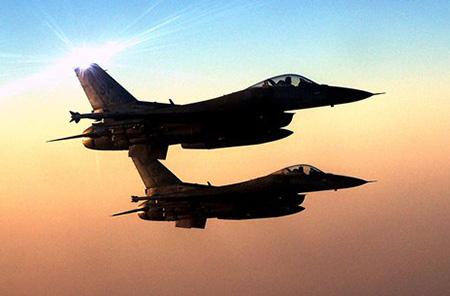After six months of training and education in the United States at the Tucson, Arizona base - reads a Pentagon press release - Iraqi pilots have formed the first F-16 squadron.
The delivery of the fighters has been postponed several times due to security problems, due to the proximity of the base of Balad, which is located about 70 kilometers (45 miles) north from Baghdad, from an area where cells of the Isis.
Iraq bought 36 F-16 from the United States, but delivery was also delayed due to previous contacts initiated by Baghdad with Russia and Iran for the purchase of Sukhoi fighters.
The F-16 will improve the capacity of the Iraqi air force, even if the platform should not be considered as a game-changer in the war against the Islamic State.
To date, Baghdad's ability to hit ground targets was entrusted to three Cessna (pictured below) armed with Hellfire missiles. These aircraft represented the best of the best in Iraq.
.jpg)
Last year, the Iraqi Air Force also purchased five Su-25 Frogfoot attack aircraft from Russia.
Upon delivery, Iraq will have 36 F-16s, but they could be of little use considering that the Pentagon, according to the Defense Security Cooperation Agency, will supply only 100 AGM-65 Maverick missiles and 600 Paveway bombs. To ensure constant and effective pressure on the positions of the Islamic State, Iraq would need at least 700 Mavericks and at least one thousand Paveways.
But the main problems are others. Platforms such as the F-16 are effective if supported by expertise, experience and logistics. The enemy number one of the future Iraqi air force, in fact, is certainly not ISIS but the poor preparation of ground force, which will have to struggle with sand, dust and torrid temperatures to keep fighters operational.
Despite recent Iraqi victories, the base remains close to the front line. Last June, suicide bombers killed 38 policemen in Samarra, about 30 miles away from Balad. If the Islamic State destroyed the F-16 on the ground, it would be a disaster.
Fundamentalists also own hundreds of MANPADS, successfully used against Iraqi helicopters. The terrorists, therefore, could try to shoot down fighters taking off or landing if they were near the base. Any aircraft, even the most powerful, is vulnerable during these maneuvers. Then there are logistics and maintenance problems.
Last week, an Iraqi Su-25 accidentally dropped a bomb on a Baghdad neighborhood, causing a dozen victims. According to the Iraqi authorities, this was a mechanical failure.
The Islamic State, therefore, is not the main enemy of the new air force. At the top of the list is inexperience which has already caused several deaths among Iraqi pilots. Without considering, finally, the impact it could have on the loyalist troops (who have repeatedly shown their cowardice), if a pilot were to fall into the hands of terrorists. The images of Jordanian pilot Moaz Al Kasasbeh, burned alive after being shot down with his F-16 in Syria, shocked the world.
To date, the arrival of the highly anticipated fighters is just a propaganda victory.
Franco Iacch
.jpg)
(photo: US DoD)












